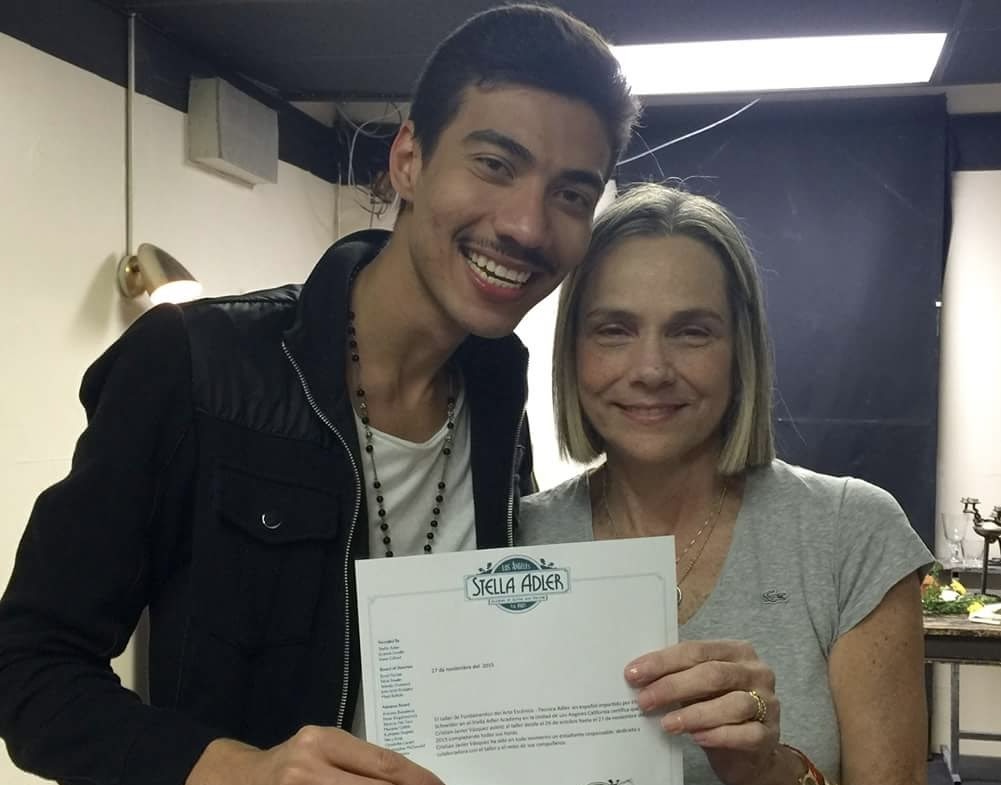(NEW YORK) — I am tired. Reading the news sucks. Blame it on the fact that I’m a Pisces, or because I’m a millennial, but reading the news has always sucked. It just so often feels like terrible thing after terrible thing. Rinse, wash, repeat. Do we have more terrible things happening in the world now than before? I don’t know. But, news coverage today is decidedly more negative than positive and we are certainly exposed to a constant barrage of repetitive bad news. Studies have shown that this is extremely detrimental to our mental health. There are days that I just don’t want to read the news ever again.
Which makes it pretty hard to be a journalist.
In organizing my thoughts on this subject, I came across a recent opinion in the Washington Post by Amanda Ripley. Ripley says she has been avoiding the news, pointing out that the U.S. has one of the highest news-avoidance rates in the world (and that across all countries most of those who avoid are more likely to be women). Even after limiting TV news and reading the news, the constant flood of “repetitive and dispiriting, often of dubious quality” news funneled at her over email, social media and text, left Ripley feeling powerlessness and despair.
Sounds familiar to me.
Ripley makes suggestions as to what is wrong with the news — bias, the click-bait business model — before suggesting it’s the lack of “the human factor.” That people are simply not designed to ingest the news cycle as it currently exists.
Which is actually something I’ve been thinking about a lot in the months since the Buffalo and Uvalde shootings in May. Because these truly awful events have started to feel… familiar.
“I don’t like how much I’ve gotten used to covering shootings,” reporter Christine Fernando tweeted in July. “I don’t like how it feels like muscle memory, how the newsroom convos feel all the same, the files we write follow a similar pattern: main story, victims profile, memorials, shooter profile. None of this is normal.”
I agree with Fernando. It’s what has started to feel “normal” and the reporting that I expect to read with each event. And I hate that it’s not just the reporting that has started to feel “normal,” it’s the fact that I now just expect that these tragedies will keep occurring. It’s not apathy or despair, it’s the actual expectation that this is just what it means to live in the U.S.
So I’d like to add to Ripley’s list of possible reasons explaining what is wrong with the news: normality.
There is a “normal” method to journalism. Journalists are taught to use neutral language that avoids showing favoritism, simple sentences, providing only facts, and with a balanced approach that includes contrasting perspectives and allows the reader to come to their own conclusions. To be objective and get the who, what, when, where, why, and how down without (and maybe before) any emotions, feelings, or biases getting in the way. “Journalists have long been thought of as simple reporters of reality – they go out into the world, see what is happening, and straightforwardly relay that information to the public,” describes the University of Texas at Austin Center for Media Engagement. Maintaining that is to reach for the journalistic ideal of objectivity.
“There becomes a rhythm to the way we report things,” Kathleen McElroy, a journalism professor at The University of Texas at Austin, said. Giving an example of how journalists first reported on the liberation of the concentration camps during World War II, “One of the first persons to do that was a Times reporter,” she said. “He reports in a particular way, and every other reporter did the same thing … There is a kind of structure that we journalists can fall into. So we cover things the same way.”
Reading about gun violence in the U.S. follows a flow: a rush to get the first news alert out, corrections, and confusion as new information comes in before settling into a more truthful narrative, followed by reminders that gun violence in the U.S. is abnormal. The number of gun-related homicides in the U.S. is astronomical in comparison to its peers. In 2019, there were an average of 4 gun-related deaths in the U.S. per 100,000. That is 18 times the average rate of other developed nations. In 2022, there have already been over 27,000 deaths, 24,000 gun-related injuries and 416 mass shootings as of August 16, the 228th day of the year.
This is a crisis. By definition, a crisis is not normal. But, gun violence tends to get reported as if it was a normal event, like a thunderstorm or someone announcing their candidacy for office. Newsworthiness, a lede and nut graf, and the inverted pyramid: the mainstays of journalism. Formats are useful, but when it comes to extraordinary things, I wonder if following those mainstays are too constricting. Too ordinary.
In treating the extraordinary as ordinary, I wonder what effect that has on the public. When we mold those events into the “normal” objective journalistic method, are we normalizing them? Is maintaining “objectivity” helping anyone at all, or is it conditioning us to think that this is just part of life?
I am not particularly objective when it comes to objectivity. I just don’t believe that anyone is truly objective. Reason can be separated from passion, but it is never free from it (sorry, Aristotle). That idea that if journalists are not objective, then the process should be is just not realistic. I’m not the only one who thinks so. And, I think it’s led us somewhere we as a society don’t want to be.
Tarkor Zehn, reporter and audio producer, wrote in an email, “I think there’s this sensationalization to desensitization pipeline in how gun violence is reported both in mass shootings and intracultural neighborhood gun violence.”
We cycle through being “bombarded with this round the clock breaking news coverage with mass shootings, but then the follow through isn’t well reported, the audience falls back, becomes apathetic and then we move on until this next mass shooting,” she wrote. “These events are always reported isolated and never properly contextualized within systemic failures, or policy issues.”
The same is true for gun violence in predominantly Black and Brown communities, Zehn further explained. “There’s this hysteria that’s created around crime, (i.e. the way Chicago is reported on) but then the reporting stops. There’s no interrogating as to why, how, who, etc. It’s painted as this big bad scary place that’s uninhabitable and unfixable.”
“When journalists refuse to follow through on these issues in fear of “picking a side” or not being seen as objective, we render our audiences hopeless and powerless as if nothing else can be done. We know this is not a normal way to live, we constantly see the comparisons on gun violence with other western countries, but the fear of confronting this head on and following deep well reported threads on the “why” is creating an apathetic society,” Zehn wrote.
“Objectivity, as perceived, is not the way it’s practiced,” McElroy said in our interview. “The disconnect is in a kind of idealism.”
Despite being treated as a traditional standard, “objectivity” in journalism has not always been the case. In the 1800s, American newspapers were once very partisan and editors proudly used their papers to manufacture and shape the news to suit their party. But, after a series of closings and mergers in the 1920s, the prevailing approach became one of neutrality, so as to attract and avoid alienating a larger audience.
However, when we look back, the news has never been impartial or objective. As reporter Wesley Lowery noted in the New York Times, “neutral ‘objective journalism’ is constructed atop a pyramid of subjective decision-making: which stories to cover, how intensely to cover those stories, which sources to seek out and include, which pieces of information are highlighted and which are downplayed.”
This is still true today. A study published in the Journal of Preventive Medicine found that in 2017 in three different cities only half of the approximately 1,800 victims of intentional shootings were covered by the media. Roughly 83 percent of the victims were Black, but only 49 percent of them were in the news, and men were 40 percent less likely than a woman to be on the news. Additionally, 16 percent of victims died as a result of their wounds, but fatal shootings were 83 percent of what was covered. The study concluded that this skews the perspectives of the public and prevents awareness of the impact on and the support of survivors.
Deciding which of those 1,800 cases to cover were subjective editorial choices. Journalism is meant to inform, but subjective decision-making distorts that information and filters it through the perspective of the person making those choices. As McElroy explained, “What a lot of people call being ‘objective’ was seeing the world through a white patriarchal lens.”
Moreover, this “objectivity” has often been used as a weapon against marginalized groups, McElroy said. “Someone asked me recently, as a woman should she be able to cover a story on birth control in Texas?” An example that begs the question, why is that still being wondered? Have we not moved past the idea that white men can report everything, but everyone else is too biased? McElroy gave another example in a recent talk with the National Press Foundation: “There were Black reporters not allowed to cover the O.J. Simpson trial, because they were Black … I don’t think any white reporters were banned from the Timothy McVeigh trial because they were white.”
This certainly is still true today, like when the Pittsburgh Post-Gazette banned reporter Alexis Johnson for covering protests in 2020 due to a tweet she posted when a white reporter was not banned even after tweeting something similar. These choices affect whose stories get told, by whom, and how. A deeper level of understanding can make a difference in how these stories get told and avoid victimizing people who have already lived through something terrible. Having worked with domestic violence victims, it drives me up the wall when I read articles written with careless language and outdated preconceived notions.
I do think that the journalist inverted pyramid template has its place in breaking news. Iman Palm, a reporter, was reporting for The Sun when the Buffalo shooting happened. She told me that she was working on the news desk. Meaning she had to get out a breaking news story within 5 to 10 minutes — writing, building a template in WordPress, all while hearing conflicting reports and never really processing what she was writing. “Trying to figure out all that was hectic, but once I figured out what was happening, the toll of it, like the emotional thing. It didn’t hit me until I was gone, like, logged out and everything,” Palm said.
Palm said this was her first time covering a mass shooting, and she had no way to prepare for it. “I’m just trying to write it, just to get the news out and call it. But after the fact, I’ve noticed what he did, where he was, who he was targeting. And I was like, dang, like, I wrote about that. And you were targeting people that look like me.”
Breaking news moves fast and it is helpful to have something to fall back on. But after, when the adrenaline rush subsides, is the time for reflection and analysis. That is where I believe it’s time to stray from the idea of objectivity and allow journalists to say that “I understand this is a problem because of this experience I had which is why I know it’s true.” In this day and age, maintaining “objectivity” is hurting the public more than it is helping as more and more we struggle with misinformation.
The U.S. is an increasingly partisan quagmire and the “truth” is challenged left and right. As Stephen J. A. Ward, media ethicist, noted in an interview with the Center for Journalism Ethics at the University of Wisconsin–Madison, the traditional view of objectivity as neutral, “lends itself, in a time of deliberate disinformation, to manipulation. Because basically what is a fact is up for grabs, and if you’re not actively doubting what people are saying you are going to be manipulated.”
Bad news also sells better. At a time when the news media landscape is rapidly changing and newspapers are closing, economic decisions heavily influence the headlines and chasing clicks has consequences — from major errors that will never disappear when everything is online, to the increasing acknowledgment of the toll the constant reporting of traumatic events has on them. As news changes, so does journalism. But it feels very much like the news and journalism haven’t quite figured out how to exist in the digital age.
“The public is holding on to an almost old-fashioned definition of what being objective is. People confuse objectivity. They think the opposite of objectivity is bias. And it’s much more complicated than that,” McElroy said. “The public still thinks that the ideal journalist is quote, unquote, objective. But we know that term is loaded. And we haven’t given them a better term, I think, partly because we can’t think of a better term.”
When I asked McElroy what she thinks the alternative is, she told me that journalists “can strive to tell as fully a dimensional story as possible.” I tend to think that objectivity is inherently unidimensional because it excludes much more than it includes, so being fully dimensional would allow in much more of the human perspective, which should include an emotional response or having an inherent interest at the issue at hand.
There is nothing inherently messy about feelings. I can separate my feelings and emotional response from a critical analysis of information and conclude something that I wish wasn’t true. My conclusion is objective — but I am not. Because we continue to see emotion as the opposite of rationality. That the presence of emotion means we feel too strongly. That our biases are showing. That we can’t be objective. And if what we write isn’t “neutral” then the criticism arrives in our inboxes saying that we’re too biased to be professional.
But if our job is to tell these terrible stories, to ask people to relive some of their worst memories to do so, and then to ask others to read one more thing about an already overwhelming world, why wouldn’t we want to be human?
Journalists are, by definition, idealists (you almost need to be in order to willingly enter the current media landscape). But, journalists are idealists who think they are realists — presenting the world as it truly is, unfiltered and unedited. Who journalists have been in the past doesn’t work for today. Our world is very different and we have to be different. This objective ideal might have worked in the white patriarchal past, but we do not have to adhere to it today.
I don’t think we should want to. I certainly would rather entrust someone who understands where I’m coming from with my story, especially if it was one that was hugely traumatic.
Things are not normal now. Why are we still behaving like it is?


